
ChemCatChem
Scope & Guideline
Elevating Chemical Understanding Through Rigorous Research.
Introduction
Aims and Scopes
- Catalytic Mechanisms and Processes:
This area delves into the fundamental mechanisms of catalytic reactions, including detailed studies of transition states, reaction pathways, and the influence of various catalysts on reaction efficiency. - Heterogeneous and Homogeneous Catalysis:
The journal covers both heterogeneous and homogeneous catalytic systems, exploring their applications in various chemical transformations, from industrial processes to sustainable chemistry. - Electrocatalysis and Photocatalysis:
A significant focus is placed on electrocatalytic and photocatalytic systems, particularly their roles in renewable energy applications such as hydrogen production and CO2 reduction. - Biocatalysis and Enzyme Engineering:
Research on biocatalysts, enzyme engineering, and the integration of biocatalysis with traditional catalysis to create more efficient and selective chemical processes is a core theme. - Nanocatalysts and Advanced Materials:
The journal emphasizes the development and characterization of nanostructured materials and their catalytic properties, including single-atom catalysts and metal-organic frameworks. - Sustainable and Green Chemistry:
ChemCatChem promotes research aimed at sustainable catalytic processes, including the valorization of biomass and the development of eco-friendly catalytic methods.
Trending and Emerging
- Electrocatalysis for Energy Conversion:
Research focusing on electrocatalytic processes for energy conversion, including hydrogen production from renewable sources and CO2 reduction, has surged, driven by the need for sustainable energy solutions. - Catalytic Applications in Biomass Valorization:
There is an increasing emphasis on utilizing catalytic processes for biomass conversion, reflecting a shift towards sustainable practices and the valorization of renewable feedstocks. - Integration of Machine Learning in Catalysis:
The incorporation of machine learning techniques to predict catalytic behavior and optimize catalyst design has gained traction, signaling an intersection of computational methods with experimental catalysis. - Nanostructured and Single-Atom Catalysts:
The development of nanostructured and single-atom catalysts has become a prominent theme, focusing on enhancing catalytic performance through precise control of active sites and materials architecture. - Photocatalysis and Solar Fuels:
Research on photocatalytic systems for solar energy conversion, particularly in generating hydrogen and other fuels, has emerged as a critical area, driven by global energy sustainability goals. - Biocatalysis in Asymmetric Synthesis:
The application of biocatalysis for asymmetric synthesis and the development of novel enzyme systems have seen a rise, showcasing the potential of biocatalysts in pharmaceutical applications.
Declining or Waning
- Traditional Organometallic Catalysis:
There has been a noticeable decrease in publications centered on classical organometallic catalysts, possibly due to a shift towards more sustainable and less toxic alternatives. - Conventional Catalytic Processes:
Research on well-established catalytic processes, such as simple hydrogenations and oxidations using traditional catalysts, is less frequently represented in newer publications, indicating a move towards more complex and innovative catalytic systems. - Basic Catalysis Studies without Application Focus:
Studies focused solely on fundamental catalysis without a clear application or practical relevance have diminished, as the field increasingly emphasizes practical implications and real-world applications. - Homogeneous Catalysis without Green Chemistry Aspects:
The interest in homogeneous catalytic processes that do not incorporate green chemistry principles, such as solvent-free reactions or sustainable feedstocks, has waned, reflecting a broader trend towards sustainability.
Similar Journals
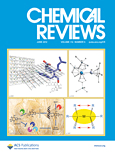
CHEMICAL REVIEWS
Charting the Course for Future Chemical Discoveries.Chemical Reviews, published by the American Chemical Society, is a leading journal in the field of chemistry, renowned for its comprehensive and authoritative reviews on a wide range of chemical topics. With its ISSN 0009-2665 and E-ISSN 1520-6890, this prestigious journal has maintained a remarkable trajectory since its inception in 1924, continuously contributing to advancements in the chemical sciences. As a Q1 journal in the Chemistry (miscellaneous) category, it stands at the forefront of research, boasting an impressive Scopus rank of #1 out of 408 in the field of General Chemistry, positioning it within the top 1% of the field. Chemical Reviews offers invaluable insights and serves as a critical resource for researchers, professionals, and students alike, facilitating knowledge exchange and fostering innovation in chemistry. While currently not open access, it remains a vital component of the scientific community, gathering an extensive readership base eager for the latest developments, methodologies, and theoretical frameworks in this dynamic discipline.

CCS Chemistry
Elevating the Dialogue in Chemistry Through Open ScholarshipCCS Chemistry, published by the esteemed Chinese Chemical Society, is a leading open-access journal dedicated to advancing the field of chemistry. Since its inception in 2019, the journal has rapidly gained recognition, achieving a remarkable impact factor that places it in the prestigious Q1 category in Chemistry (Miscellaneous) as of 2023. With a Scopus ranking of #41 out of 408 in General Chemistry, CCS Chemistry represents the top 10th percentile in its category, reflecting its commitment to high-quality research and innovation. The journal serves as a vital platform for researchers and professionals to share their findings, showcase cutting-edge methodologies, and engage with the latest developments in various chemistry subfields. Accessible to a global audience, CCS Chemistry ensures that groundbreaking research is available without barriers, making it an indispensable resource for students and academics aiming to stay at the forefront of chemical sciences. For further details, submissions, and access to published articles, please visit the journal's website.
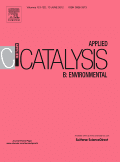
Applied Catalysis B-Environment and Energy
Advancing sustainable solutions for a greener tomorrow.Applied Catalysis B-Environment and Energy, published by Elsevier, is a leading journal in the fields of catalysis, environmental science, and process chemistry, with an impressive impact factor that reflects its significance in advancing research and innovation. Established in 1992, this esteemed journal has earned a prestigious status as evidenced by its 2023 category quartiles—ranking in the Q1 category for Catalysis, Environmental Science, and Process Chemistry and Technology. With consistently high rankings in the Scopus database, it holds a remarkable position as #1 in General Environmental Science and #2 in both Process Chemistry and Catalysis, showcasing its profound impact on the respective fields. The journal’s scope encompasses both theoretical and practical research, targeting the pivotal developments in catalysis that promote sustainable practices and energy efficiency. Researchers, professionals, and students alike will find invaluable insights and cutting-edge studies published within its pages, making it an essential resource for those invested in pioneering advancements for a greener, more energy-efficient future.

APPLIED CATALYSIS A-GENERAL
Transforming Ideas into Catalytic Solutions.Applied Catalysis A-General is a premier journal published by Elsevier that serves as a vital resource in the fields of catalysis, process chemistry, and technology. Founded in 1991, this esteemed journal has garnered considerable recognition, reflected in its classification in the Q2 quartile for both catalysis and process chemistry in 2023, as well as its notable rankings within the Scopus database, placing it among the top 20 journals in related disciplines. With an ISSN of 0926-860X and an E-ISSN of 1873-3875, the journal provides a platform for researchers and professionals to disseminate cutting-edge research findings, facilitate knowledge transfer, and foster innovation in the field. While not an open-access journal, it remains accessible through institutional subscriptions, ensuring that critical findings reach a broad audience. The journal's objectives include advancing the understanding of catalytic processes and their applications, making it an indispensable tool for those engaged in this dynamic area of study. Applied Catalysis A-General continues to play a vital role in shaping the future of catalysis, contributing to both scientific progression and practical advancements in various industries.

Catalysis in Industry
Unleashing the potential of catalysis in industry.Catalysis in Industry, published by MAIK NAUKA-INTERPERIODICA, is a pivotal journal in the field of chemical engineering and catalysis. With its ISSN 2070-0504 and E-ISSN 2070-0555, this journal has been dedicated to advancing the understanding and application of catalytic processes in industrial settings since its inception in 2010. Despite its Q4 ranking in the category of Catalysis as of 2023 and a Scopus rank of #61/68, the journal serves as a valuable platform for researchers and practitioners to disseminate innovative ideas and findings that contribute to the evolution of catalysis technology. Published in Russia, Catalysis in Industry aims to bridge the gap between academic research and industrial practice, providing Open Access options to facilitate widespread accessibility and encourage a collaborative approach to chemical engineering challenges. As the industry grapples with the demand for sustainable solutions and efficient processes, this journal remains a critical resource for the academic community, aspiring professionals, and students eager to deepen their knowledge in catalytic applications.
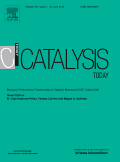
CATALYSIS TODAY
Igniting Innovation in Chemical EngineeringCATALYSIS TODAY is an esteemed journal published by Elsevier, specializing in the vibrant field of catalysis and its applications in chemical engineering. With the ISSN 0920-5861 and E-ISSN 1873-4308, it has continually contributed valuable research since its inception in 1987 and is set to maintain its influence through 2025. Hailing from the Netherlands, this journal stands out with a notable Q2 quartile ranking in catalysis and a Q1 ranking in miscellaneous chemistry as of 2023, reflecting its rigorous selection of impactful and innovative studies. Its Scopus rankings further substantiate its excellence, highlighting its position in the 89th percentile of general chemistry and 77th percentile in catalysis. CATALYSIS TODAY aims to disseminate cutting-edge findings, fostering exchange among researchers, professionals, and students in the catalysis community. By presenting high-quality research articles, reviews, and case studies, it plays a pivotal role in advancing knowledge and sparking discussions that drive future developments in the field.
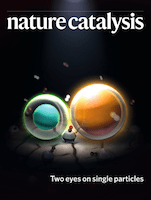
Nature Catalysis
Connecting Disciplines for Revolutionary Catalytic DiscoveriesNature Catalysis is a premier academic journal published by NATURE PORTFOLIO, specializing in the rapidly evolving fields of biochemistry, bioengineering, and catalysis. With its ISSN of 2520-1158, this journal has emerged as an invaluable resource since its inception in 2018, contributing significantly to interdisciplinary research. Recognized for its high impact within the scientific community, it holds a prestigious Q1 ranking across multiple categories, including Biochemistry, Process Chemistry and Technology, and Catalysis as of 2023, illustrating its influence and authority in the field. Researchers will find impactful articles characterized by rigorous peer review processes that push the boundaries of knowledge in catalysis and its applications. While the journal operates with traditional access models, it remains accessible to a global audience interested in innovative research findings that promise to shape future developments in these critical areas. Positioned at the forefront of contemporary scientific inquiry, Nature Catalysis invites contributions that expand upon catalytic processes and technologies, which are crucial for advancing both fundamental science and applied engineering.
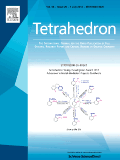
TETRAHEDRON
Elevating scientific dialogue with rigorous peer-reviewed research.TETRAHEDRON, published by Pergamon-Elsevier Science Ltd, is a leading peer-reviewed journal that has been pivotal in advancing the fields of Biochemistry, Drug Discovery, and Organic Chemistry since its inception in 1957. With an ISSN of 0040-4020 and an E-ISSN of 1464-5416, this journal provides a platform for the dissemination of cutting-edge research and innovative methodologies that contribute significantly to the scientific community. Recognized for its rigorous editorial standards, TETRAHEDRON has been categorized in the Q3 quartile for 2023 across its relevant fields, reflecting its solid impact within the scientific sphere. Despite the current absence of Open Access options, the journal continues to engage a diverse readership, offering invaluable insights and advancements that fuel both academic and industrial applications. With an ongoing commitment to excellence, TETRAHEDRON remains an essential resource for researchers, professionals, and students aiming to stay at the forefront of chemistry and biochemistry research.

ACS Catalysis
Unleashing Potential in Catalytic ProcessesACS Catalysis, published by the American Chemical Society, stands as a premier journal in the field of catalysis, offering a vital platform for researchers, professionals, and students focused on advancing the science of catalysis and its applications. With an impressive impact factor placing it in the Q1 category for both Catalysis and Chemistry (miscellaneous), this journal has established itself as a leading source of high-quality research findings, currently ranking #21 out of 408 in General Chemistry and #9 out of 68 in Catalysis according to Scopus. Since its inception in 2011, ACS Catalysis has aimed to publish innovative research that addresses the critical challenges in catalytic processes, advancing our understanding of both fundamental and applied aspects of catalysis. With a commitment to promoting open scientific discourse, it serves a vital role for those interested in the latest methodologies, discoveries, and trends in this essential discipline. Based in Washington, DC, ACS Catalysis continues to uphold the highest standards of scholarship and collaboration within the vibrant community of chemists and engineers worldwide.

CATALYSIS SURVEYS FROM ASIA
Pioneering Insights into Catalytic Processes and ApplicationsCATALYSIS SURVEYS FROM ASIA, published by Springer/Plenum Publishers, is a vital resource in the ever-evolving field of catalysis and chemistry. With a dedication to publishing innovative research and reviews from 2002 to 2024, this journal serves as a platform for the dissemination of significant findings that enhance our understanding of catalytic processes and their applications. Although its current impact factor is not explicitly listed, the journal holds a commendable Q3 ranking in Catalysis and Q2 ranking in Miscellaneous Chemistry within the prestigious Scopus database, indicating its relevance and quality among its peers. Open access options ensure that a broader audience can benefit from the research published, fostering collaboration and advancement in the field. By bridging the gaps between academic research and practical applications, CATALYSIS SURVEYS FROM ASIA is indispensable for researchers, professionals, and students committed to pushing the boundaries of catalytic science and technology.